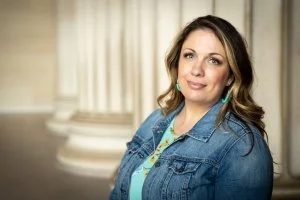Just the other day, someone tweeted out a challenge asking readers to share, in five words or less, something that would annoy die-hard Texans. As a prodigal Texan, I responded: “Austin, Austin, Austin, Austin, Austin.”
You see, the People’s Republic of Austin — I heard that label in the 1970s — is located inside Texas and it is even the capital of Texas, but it has long been deep-blue urban zip code (there are now others) in a rather red state.
This creates tensions. Which brings us to that interesting Christmas Wars headline the other day in The Washington Post: “A Texas culture clash: Dueling parades over the meaning of Christmas,” which was the hook for this week’s “Crossroads” podcast (CLICK HERE to tune that in).
Let me offer a bit of “Christmas Wars” background. For decades, the most powerful institutions in American life — government, mass media, public schools, shopping malls, etc. — have argued about what kind of language and symbolism can be used during the cultural tsunami known as The Holidays. As one Baptist progressive said long ago, people may want to play it safe and say, "Merry Christmas, Happy Hanukkah, and a Joyous Kwanzaa, Martyrdom Day of Guru Tegh Bahadur, Bodhi Day, Maunajiyaras Day, Beginning of Masa'il, Nisf Sha'ban and Yalda Night, Yule and Shinto Winter Solstice, and Ramadan! Or, happy holidays!"
But there is a serious church-state issue looming in the background: Is religious speech and symbolism a uniquely dangerous force in public life? In practical terms, can public institutions — especially if there are tax dollars involved — let “Christmas be Christmas.”
Strange things have happened in these debates, such as some (repeat “SOME”) religious and cultural conservatives celebrating when, let’s say, Menorahs and even Nativity scenes are acceptable since they have become “secular” symbols that no longer have offensive religious content. That’s a win for religion?
With that in mind, let’s look at the overture of this Washington Post story, about Christmas Wars in greater Austin:
TAYLOR, Tex. — The trouble started at last year’s Christmas parade, when students from St. Mary’s Catholic School watched as two drag queens aboard the first Taylor Pride float danced and lip synced to Christmas carols beneath a glittering rainbow arch.










